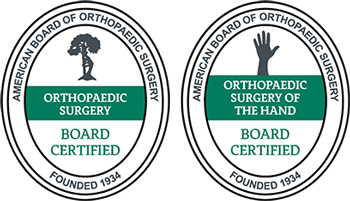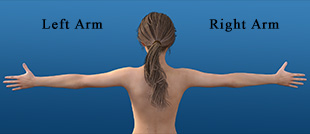How Long Does it Take to Recover From a Wrist Sprain?

Contents
What is a wrist sprain?
The wrist is a joint that comprises the carpal bones. There are eight (8) carpal bones in the wrist and these bones are arranged in two rows. The proximal wrist bones articulate with the radius and ulna, while the distal carpal bones connect with the metacarpals. In total, the wrist joint links fifteen (15) separate bones.
The bones of the wrist are held together by cartilage and ligaments – these are dense fibrous connective tissues. Articular cartilage and ligaments allow the bones of the wrist to slide along each other while in a proper position. These provide stability to the joint and also aid movement of the wrist.
The hand is of constant use for various activities. A wrist sprain can occur when the ligaments that stabilize the wrist bones become stretched beyond their normal elastic limit. In severe cases, the ligament can be partially or completely torn.
What are the causes of a wrist sprain?
The primary cause of a wrist sprain is from a fall on an outstretched hand. When this happens, it is very likely that the hand or wrist bends or twists forcefully. Wrist injuries are common and can happen to anyone during everyday activities. Wrist sprains are common during snowfall or ice storms. In this weather condition, the ground is slippery and the chance of a slip is high.
In work-related activities, the highest proportion of people with wrist injuries are in service industries, manufacturing, construction laborers, carpenters, etc. Overuse wrist injuries are also common in sports, such as racquet sports, gymnastics, golf, weightlifting, etc. About 3% to 9% of sport-related injuries are wrist or hand injuries.
What are the risk factors and symptoms of a wrist sprain?
Since most wrist sprains are due to falls, slippery floors, age, muscle weakness, poor eyesight, poorly fitting footwear, trauma, and wrist overuse predispose people to damage the ligament that holds the wrists.
The symptoms associated with a wrist sprain varies from mild pain to severe pain, which worsens whenever the hand is moved. In some individuals, the wrist will become swollen and tender with ecchymosis (bruising with blue-black discoloration). Redness and warmth are often observed in recently sprained wrists. Some patients have reported a popping sound in the wrist.
How is a wrist sprain diagnosed?
For an accurate diagnosis of a wrist sprain, the primary care doctor must obtain a detailed medical history, and occupational or work history on the patient. It is very important that the doctor rule out confounding diagnosis since wrist sprain shares similar symptoms with other hand injuries. The doctor will perform a physical examination of the hand and the surrounding areas.
The doctor may recommend imaging tests to improve diagnosis. MRI scan and CT scan aided by an arthrogram, a special dye that can be injected into the wrist joint to assess ligament tears, can be used to obtain accurate pictures of the wrist and ligaments. X-ray imaging will show bone fractures and wrist bones alignment. Although x-ray will not show the ligaments, it can be used to rule out other diagnoses.
After evaluating the hand and reviewing symptoms, the doctor will determine if the patients can continue treatment in an urgent care facility or be referred to a hand surgeon or specialist for further treatment.
How to treat a wrist sprain?
In order to treat a wrist sprain correctly, the doctor must determine the grade or severity of the sprain. For mild wrist sprain involving a stretched ligament, non-surgical treatment can be administered. For severe wrist sprain involving a partial or a complete tear of the wrist ligament, an orthopedic surgeon will perform surgery on the wrist.
Non-surgical treatment
A mild wrist sprain can be treated in urgent care facilities using home care treatments. Most home care treatment will aim to reduce symptoms of the injury until the ligament heals naturally. RICE (rest, ice, compression, and elevation) treatment is recommended for mild sprains. Resting the wrist by reducing normal activity using the injured arm relieve pain. Icing and compressing the injured area will reduce swelling.
A wrist splint or brace can be used to immobilize the wrist joint for up to two weeks. Doctors may prescribe over-the-counter (OTC) NSAIDs such as ibuprofen to alleviate pain.
Surgical treatment
In the case of a severe wrist sprain with either a partial or complete ligament tear, it is important that the patient is referred to a specialist, particularly a hand and wrist surgeon. During surgery, the hand surgeon will reconnect the ligament.
Post-operative management, recovery, and rehabilitation after treatment
After surgery, the doctor will advise that the patient undergo physical therapy or rehabilitation. For non-surgical wrist sprain, recovery usually takes a short time (about 1 to 2 weeks). However, recovery following surgery can take about 8 to 12 weeks or months (6 to 12 months) for a full recovery.
Most wrist sprains have a positive prognosis. Full recovery time usually depends on the severity of the sprain, treatment option, age of the patient, pre-existing conditions, and rehabilitation exercises after treatment. A physical and occupational therapist can help patients who have undergone surgery for wrist sprain to recover fully. Stretching and strengthening exercises that decrease muscle stiffness and increase the range of motion of the wrist joint are often prescribed for recovering patients. Patients are encouraged to limit the use of the injured hand unless advised otherwise by the surgeon or physical therapists.
Citations
- Rettig, Arthur C. “Athletic Injuries of the Wrist and Hand.” The American Journal of Sports Medicine, vol. 32, no. 1, 2004, pp. 262-273.
- Harvard Health Publishing. “Wrist Sprain.” Harvard Health, 31 May 2019, www.health.harvard.edu/a_to_z/wrist-sprain-a-to-z.
- “Sprained Wrist Treatment, Symptoms & Prevention.” EMedicineHealth, 19 Dec. 2018, www.emedicinehealth.com/sprained_wrist/article_em.htm#what_are_risk_factors_for_a_wrist_sprain.
Read more about Wrist Sprains

























